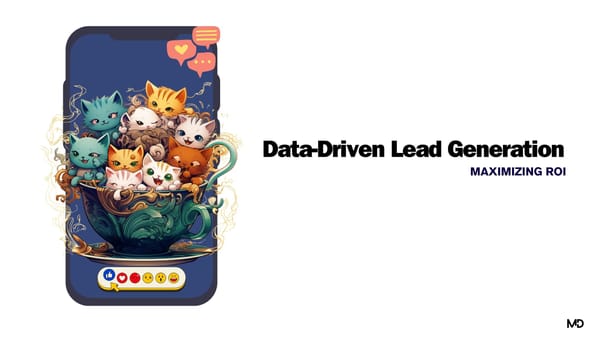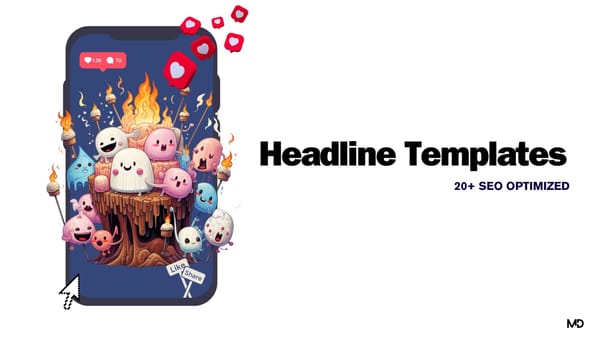Optimize Your Content Project Plan and Boost Content ROI

Content marketing often feels like a never-ending marathon – you keep producing, but are you getting the best possible returns?
A crafted content project plan could be the catalyst that transforms 'busy work' into results-driven success.
It's about aligning strategy with execution, creating an organized system that makes sure every piece of content serves a specific purpose within your business goals.
Why Do You Need a Content Project Plan?
Think of your content project plan as the blueprint for your marketing house.
73% of B2B marketers and 70% of B2C marketers use content marketing as part of their marketing strategy.
Here's what a solid plan brings to the table:
- Strategic Focus: No more scattered ideas. Your plan aligns content with overall business objectives and your target audience, ensuring each piece moves you closer to those goals.
- Improved ROI: Optimizing processes, leveraging the best channels, and tracking results lets you amplify the return on your content investment.
- Team Collaboration: Everyone involved in content creation understands their roles, deadlines, and how their work connects – resulting in better output and fewer communication headaches.
- Adaptability: Your plan isn't set in stone. Tracking metrics allows you to make timely adjustments based on real-world performance for consistently effective content.
Key Elements of an ROI-Maximizing Content Project Plan
Crafting a content plan isn't merely about scheduling - it's about setting yourself up for targeted wins that enhance your brand and ultimately contribute to revenue.
The right elements in your plan ensure that your content efforts aren't scattered shots in the dark, but laser-guided missiles hitting their intended goals.
Let's explore those key pieces:
1. Set Crystal Clear Goals
Before a single line of content is written, it's essential to ask "what's the endgame?"
Your content strategy must align with broader business goals. Are you aiming to boost brand awareness in a specific niche? Establish yourself as a thought leader in your sector? Generate more qualified leads? Consider the following:
- Avoid Vague Ambitions: "Get more people on our site" isn't enough. Make goals specific.
- S.M.A.R.T. Goals: They are Specific, Measurable, Achievable, Relevant, and Time-bound. Example: "Achieve a 20% increase in blog subscribers over the next three months."
2. Know Your Audience
The cornerstone of compelling content is a deep understanding of who you're seeking to engage. Superficial demographics just won't cut it – you must identify their motivations, concerns, and where they seek information. Think deeply about the following:
- Buyer Personas: Develop in-depth profiles that outline age, role, profession, challenges, and online behavior.
- Content Tailoring: Your tone of voice and topic focus should adjust depending on if you're targeting casual blog readers or C-suite executives.
3. Content Ideation with AIDA in Mind
Remember, AIDA stands for Attention, Interest, Desire, and Action. Brainstorm content that moves your audience through these stages.
- Ideation Techniques: Think of mind maps, keyword research, or team brainstorms. Ask: "Is this idea genuinely aligned with our target audience's needs?"
4. Build a Content Calendar
Your content calendar is your roadmap to consistent posting, which builds audience loyalty and signals you're a reliable source of information. A robust calendar involves:
- Content Theme Planning: Align topics with business goals and audience interests.
- Deadlines: Keep production on track and maintain accountability.
- Flexibility: Leave a bit of wiggle room for reacting to trending topics relevant to your industry.
5. Choose the Right Distribution Channels
Analyze where your target audience consumes content. Do they spend most of their time scrolling through LinkedIn, following Instagram influencers, or checking in on industry forums? Focus your distribution efforts on those channels and avoid diluting your presence by trying to be everywhere at once.
6. Track Metrics and Key Performance Indicators (KPIs)
Data analysis is not optional – it's the crucial feedback loop that allows you to improve results over time.
- KPI Identification: Choose KPIs that reflect your main goals (website traffic, email signups, social media shares, sales inquiries).
- Analytics: Set up tracking and use analysis tools to see which content pieces excel and where gaps exist.
7. Repurpose & Repromote
Your best blog post is an investment! Transform core pieces into visual social media assets, guest post snippets, or even email newsletter features. Repurposing gives your top content multiple opportunities to gain traction. Remember:
- Repromotion Strategy: Schedule new 'pushes' for high-value content across channels.
- Experiment: Try different times, headlines, or visuals to see which variations ignite more engagement.
Pro Tips for Streamlining Your Workflow
Beyond your core plan, integrating smart tools and streamlining processes is what boosts ROI and lets you avoid "content burnout". Here's how you can refine those areas:
1. Project Management Tools
These platforms transform a collection of scattered tasks and deadlines into a centralized command center. They help you:
- Task Allocation: Assign specific content pieces, drafts, and design phases to various team members, allowing for seamless collaboration.
- Timeline Tracking: Real-time updates and visually intuitive project boards prevent tasks from falling through the cracks, maintaining accountability.
- Feedback Centralization: Comments and approvals happen within the platform instead of getting lost in email chains, making the review process more organized.
Popular tools to explore:
- Asana: Flexible for various workflow styles, ideal for teams collaborating on multiple project types.
- Trello: Kanban-style boards (with drag-and-drop cards) provide an easy visual snapshot of projects' progress.
- Monday.com: Highly customizable dashboard, allows you to track budgets, assign roles and communicate.

2. Content Creation Templates
These eliminate the guesswork in ensuring your content aligns with brand identity and best practices.
Examples templates include:
- Blog Post Templates: Outlines of key sections (intro, subheadings, calls to action) keep your writers focused and ensure consistency.
- Social Media Templates: Maintain branded elements, such as font choices, visual themes, and image sizing for each platform.
- Email Newsletter Template: A reusable skeleton structure for newsletters promotes visual order and improves reading flow.
Where to create templates:
- Your Team's Shared Drive: A straightforward but effective system if collaborators are easily accessible and changes are minimal.
- Design Platforms: Consider Canva or Adobe Creative Cloud – useful for templates involving heavy graphics elements or video-based content.
3. Automation Where It Matters
Automate repetitive, time-consuming tasks but always keep an eye on maintaining a personalized approach. Smart automation lets you:
- Social Media Scheduling: Tools like Hootsuite or Buffer allow scheduling posts days or weeks in advance, maintaining a consistent online presence, even when you're away.
- Email Marketing Automation: Use platforms like Mailchimp or ConvertKit to set up personalized welcome sequences, follow-up messages, or segmented lead nurture campaigns.
- Data reporting: Automation of some analytics functions can streamline the process of tracking success and performance metrics.
Caveat: Don't overuse automation!
- Personalization Matters: Automated replies are helpful, but direct customer queries deserve a human response.
- Overkill = Spammy: Bombarding people with endless "automatically generated" content degrades audience trust.
Important note: Many of these tools offer free basic tiers, letting you try before committing. Explore those to find the right fit!
Struggling with bandwidth or specialized skills? Outsourcing aspects like writing, design, or video editing can ease the burden. Just ensure proper communication and integration with your overall strategy.
Your Content Plan is Your Blueprint
Building (and constantly improving) a content project plan takes some initial work, but it pays off tenfold.
As your content machine becomes oiled and optimized, you'll stop feeling creatively burned out and see those long-awaited results emerge. Focus, consistency, and strategic refinement will pave the way for serious content ROI!





